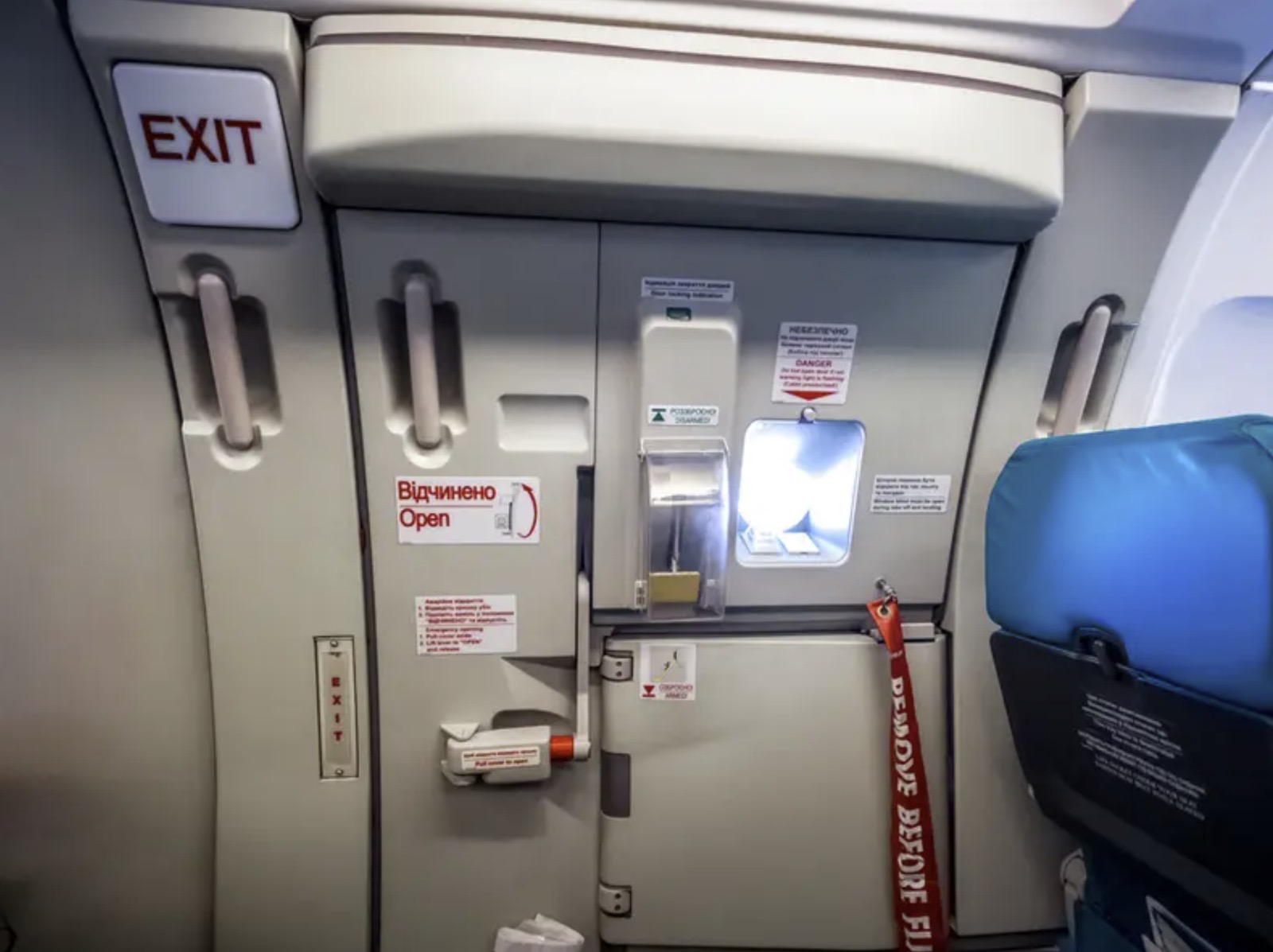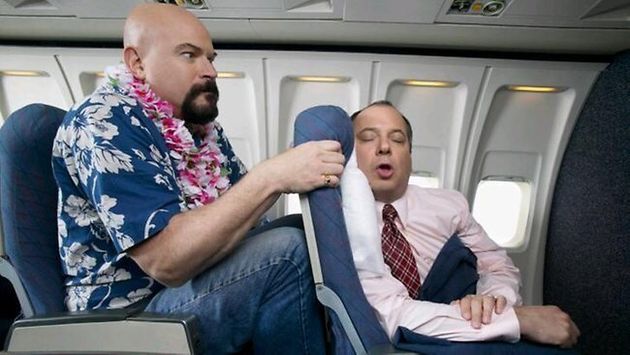On Tuesday, February 20, at 1:54 pm, an American Airlines flight took off from Albuquerque’s International Sunport headed for Chicago, a three-hour flight away.

Roughly half an hour into the flight, a passenger, Emma Ritz, says that a man whose seat was next to the emergency exit “cracked open the window that was protecting the handle†of the emergency door, then “ripped down the handle where it exposed some of the emergency exit and all the wind came rushing in.â€
Another passenger, Blaze Ward, says, “the man had the safety mechanism down, with both hands on the lever and he was yanking it.  He had it pretty well pulled … I could hear the actual difference in pressure – there was a whistling.â€
Tweeted a passenger four rows back who calls himself The Wonton Don, “Me and 5 other dudes had to wrestle him into the aisle, duct tape his legs, and throw flexi-cuffs on him.â€Â  Yet another passenger who calls herself layzdubz tweeted that it was “one of the scariest days of my life.â€
As for the plane, it turned around to make an emergency landing back in Albuquerque.  And the man who couldn’t stand being in the plane any longer was hauled away by four policemen.  Now the FBI is investigating the case.
Trying to open plane doors and get out when you’re flying up to six miles high in the sky has been showing up in headlines with increasing frequency.
- There was the Canadian man in Thailand who tried to open the door as the flight was waiting for takeoff.
- The man on a plane in South Korea who tried to open the door as the plane was landing.
- The man on a Southwest Airlines flight at a gate in New Orleans who opened the door of the emergency exit, walked out on the wing, and jumped off.
- And the off-duty pilot getting a courtesy ride in the cockpit  of an Alaska Airlines flight over Oregon who tried to switch off the engines at 32,000 feet.

Why is this strange behavior happening?  The researchers delving into what they call disruptive airline passenger behavior are not sure.
Here’s an overview of what they’ve found so far. The stresses of crowded airports, infinite security lines, overbooked flights, flight delays, undersized seats, not enough leg room, the passenger ahead of you reclining his seat into your tiny bit of territory, the kid behind you kicking the back of your seat, and the passenger next to you trying to hog the armrest you think is your own.  Not to mention overcrowded overhead compartments and carry-on luggage that doesn’t fit into the space available to you, all of these stresses deplete what researchers call your “emotional and cognitive resourcesâ€.  Your ability to control yourself.
Add the deadly mix of your prescription drugs and your illegal drugs with the alcohol that the flight attendant sold you, and some passengers go crazy.  Worse, some go into a nearly delusional state.  As one airline flight attendant, said,  they go “very out of touch with reality,â€Â  they experience “some kind of mental break.â€
In the case of the pilot hitchhiking a ride in the cockpit, his break was the effect of something he had never tried before, magic mushrooms.
In the case of the passenger in South Korea who attempted to open the door as the plane was landing, “he felt suffocated and wanted to get off the plane quickly.â€Â  Or as the passenger who tried to open a plane door in flight Tuesday said, he “had to get off this plane.” He’d lost touch with the reality of the six mile drop outside the door and with the possibility of crashing the plane and killing all of his fellow passengers.
Air rage incidents skyrocketed from less than 600 in 2017 to nearly 6,000 in 2021, when passengers tussled with attendants over wearing facemasks.  In other words in a mere four years, air rage episodes rocketed up to over ten times what they’d been.
But the good news is that incidents of air-rage have gone back to a third of what they were in that angry peak year of 2021.  This year they will be less than two thousand.  But 2,000 is still four times what air rage outbursts were just seven years ago.

References:
McLinton, Sarven S., Doug Drury, Shepard Masocha, Harry Savelsberg, Lucy Martin, and Kurt Lushington. ““Air rageâ€: A systematic review of research on disruptive airline passenger behaviour 1985-2020.” Journal of Airline and Airport Management 10, no. 1 (2020): 31-49.  http://www.jairm.org/index.php/jairm/article/view/156
https://usafacts.org/articles/whats-behind-all-these-cases-of-unruly-aircraft-passengers/
https://www.newsweek.com/american-airlines-flier-dogpiled-accused-trying-open-door-flight-1871805
https://news.yahoo.com/american-airlines-passengers-tackle-restrain-111727255.html
https://twitter.com/layzdubz/status/1760073563426492731
______
Howard Bloom of the Howard Bloom Institute has been called the Einstein, Newton, and Freud of the 21st century by Britain’s Channel 4 TV.  One of his seven books–Global Brain—was the subject of a symposium thrown by the Office of the Secretary of Defense including representatives from the State Department, the Energy Department, DARPA, IBM, and MIT.  His work has been published in The Washington Post, The Wall Street Journal, Wired, Psychology Today, and the Scientific American.  He does news commentary at 1:06 am Eastern Time every Wednesday night on 545 radio stations on Coast to Coast AM.  For more, see http://howardbloom.institute.



